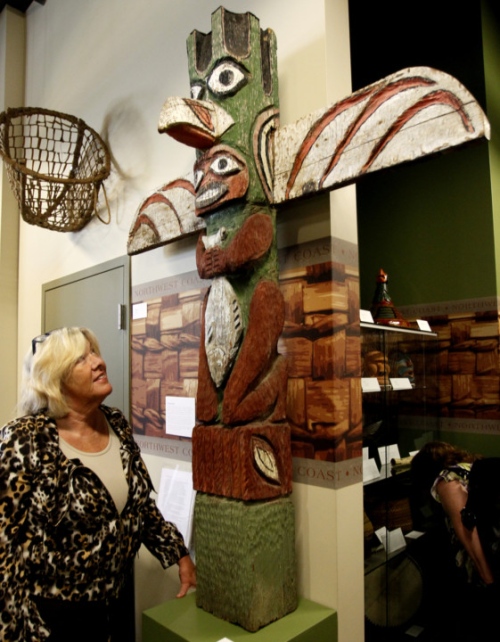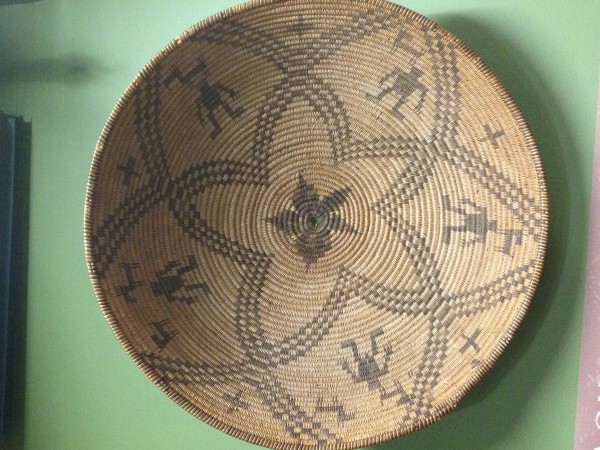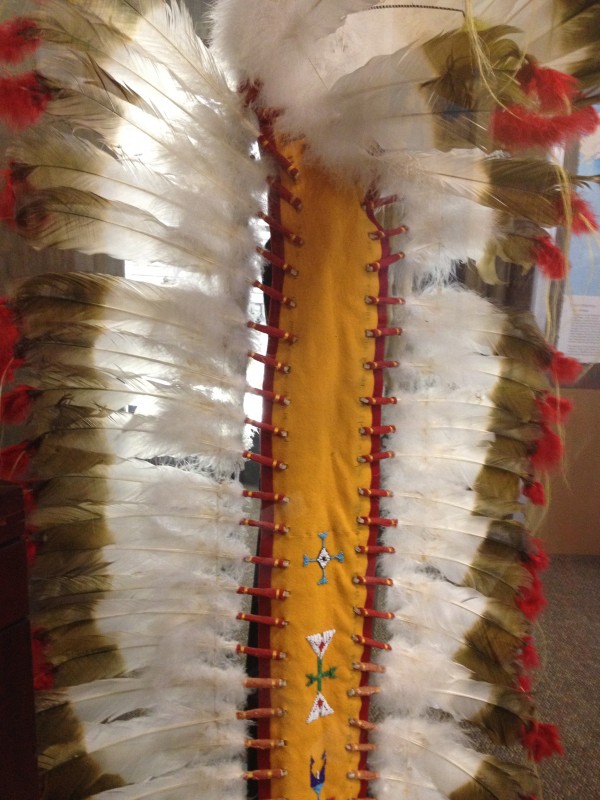
Private Native American art collection gets public showing
Jim and Vanita Oelschlager have amassed nearly 800 pieces of Native American art and cultural objects and have recently made the big leap to lend about 200 of them for public display at the Center for the History of Psychology (CHP) at The University of Akron.
Strange how collections come into being, and stranger still where they show up to be seen — that is, until you get the skinny from the people involved.
David B. Baker, executive director of CHP, commented that he’d been at work on the idea of creating an Institute for Human Science and Culture within the university. Its purpose would be to promote “understanding of what it means to be human.”
Psychologists are certainly interested in that. So too are anthropologists and artists. Conversations began, other disciplines got involved, exhibit space was already defined and ample, and so the idea has come to fruition in this exhibit — called “Connecting Objects to their People: From the Arctic to Arizona.”
The Oelschlager collection covers a significant span of time and geography — from about 600 BCE to the present and from Arizona to Alaska. That can make it really difficult to get a handle on both the collection and the groups represented.
Curators for the exhibit have helped. Just inside the gallery space is a huge wall installation showing different time spans for the tribes and the various areas where they lived. That helps to set the stage.
Most artifacts and art objects are gathered together by region. Earlier and later time period items exist side by side and give an historical context in the briefness of only a few art items.
Differences in time and place seem to be equally matched by what various tribes took it upon themselves to make creatively.
Some northern and arctic-area groups, like the Yupik and Tlingit went for working with wood and bone and creating things like carved masks, shaman hats and totem poles to express their creativity and ideas of beauty, and made room for more decorative arts in recent times in such things as woven bowls and carved statuary.
In the southwest, tribes like the ancient Hohokan and more recent Anasazi and Pima used native elements (wood, grasses, plant fiber and the like) and fashioned them into the things of art.
The Pima seem to be known for basket making, articles of clothing and similar useful art pieces.
In the Great Plains bead working, painted fabric (like on teepees), and fashion items like painted or beaded clothing — these were the things tribal artists tended to prefer.
This is the kind of exhibit where you need plenty of time, for there are lots of educational type didactics to help you in acquainting yourself with these peoples and their artistic interests.
“Connecting Objects to their People: From the Arctic to Arizona” at the Center for the History of Psychology, 73 College St, Akron; 330-972-7285; www.uakron.edu/chp. Exhibit will be on display through October 14, from 10 a.m. -4 p.m. Monday-Friday and 12-4 p.m. on Saturdays. Admission is free, with some free parking in the adjoining lot.
Recent Content
-
Artsarticle ·
-
Artsarticle ·
-
Artsarticle ·




